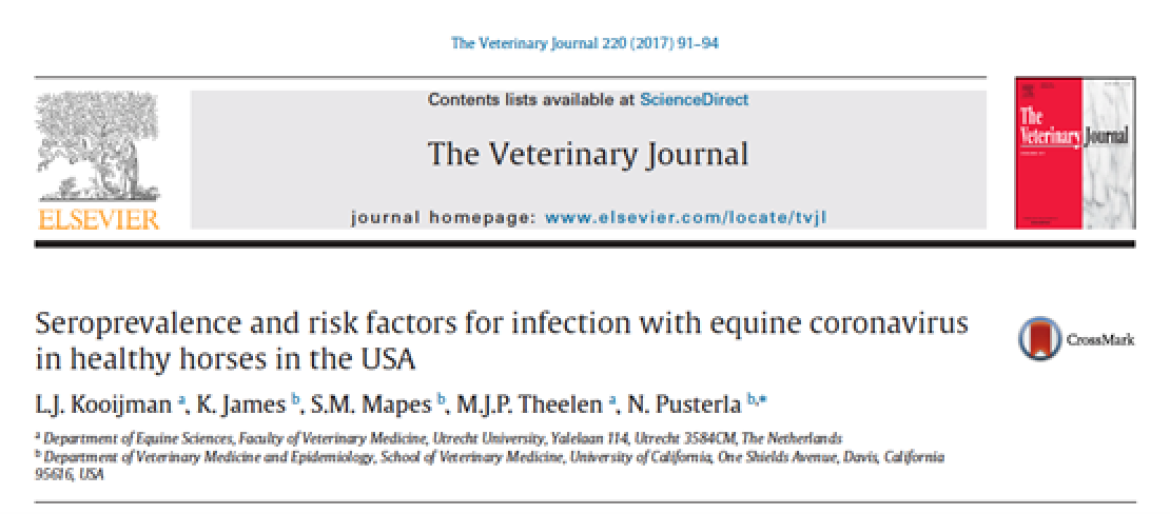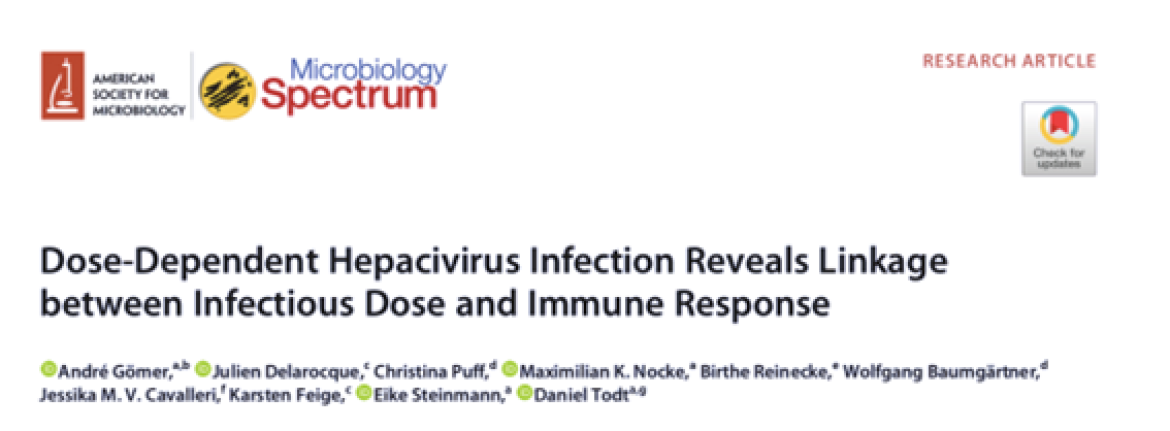
Research
INFECTIOUS DISEASES
In 2022 several articles have been published about different infectious diseases. Numerous ECEIM diplomates are involved in the relevant research, with many groups from different countries working in this area.

The team of University of Berlin wrote this interesting paper in which they screened 437 equine sera for West Nile Virus (WNV)-specific antibodies (ELISAs followed by virus/specific neutralization tests) and genomes (RT-qPCRs). They found marked increases of seroprevalence from 8.16% in 2019 to 13.77% in 2020. Only 4 horses developed clinical signs. The authors concluded that WNV circulation is present in eastern Germany but not yet in the western part.
doi: 10.3390/v14020243

Our colleague Mathijs Theelen is co-author of this publication in collaboration with researchers from UCDavis School of Veterinary Medicine about equine coronavirus (ECoV). They screened an impressive number of 5247 healthy horses for ECoV. A 9.6% seropositivity for ECoV was identified, with risk factors for infection found to be geographic region, breed and the use of the horse.
doi: 10.1016/j.tvjl.2017.01.007

This multicentric study takes a retrospective look at nearly 600 horses/ponies with Equine Herpes Myeloencephalopathy (EHM) in Germany, Denmark, and Sweden between 2009 and 2020. Data was collected using a questionnaire. The authors found that fever, age (older), and sex (female) were risk factors for EHM in a logistic mixed model. Some breeds had a decreased risk to develop EHM compared to others (Shetland and Welsh ponies), while EHV-1-vaccinated horses were less affected by EHM compared to unvaccinated horses. This study confirms earlier suspected host-specific risk factors, with the data supporting the benefit of vaccine coverage at high-traffic boarding facilities.
doi: 10.3390/v14112576

Several ECEIM Diplomates from Germany and Austria were involved in this interesting research. The aim of the study was to describe the minimum dose required for robust equine hepacivirus (EqHV) infection in equids and examined how this relates to duration of infection, seroconversion, and transcriptomic responses. The results showed that inoculation with low doses may enable EqHV to evade strong immune responses in the early phase and therefore promote robust, long-lasting infection. The authors demonstrated that it is possible to develop an effective prophylactic vaccine in horses.
doi: 10.1128/spectrum.01686-22
NEUROLOGY

DOI: 10.1016/j.jevs.2022.103912
The team of Munich in collaboration with University of Kentucky have published this work regarding transcranial magnetic stimulation (TMS). The aim of the study was to determine the effect of submaximal stimulation intensities (SI) and to determine the minimum coil output necessary to evoke motor unit potentials. The authors included 36 neurological healthy horses to stimulate with different intensities. The researchers concluded that stimulation intensity of 80% coil output already appeared sufficient for reproducible activation of lower motor neurons in all limbs.
